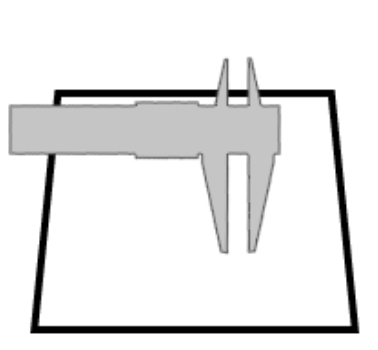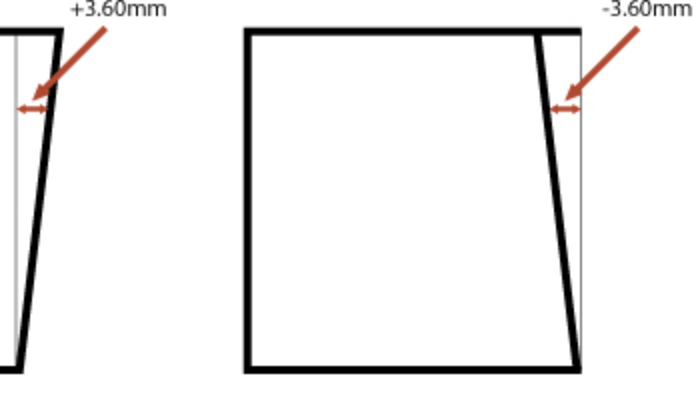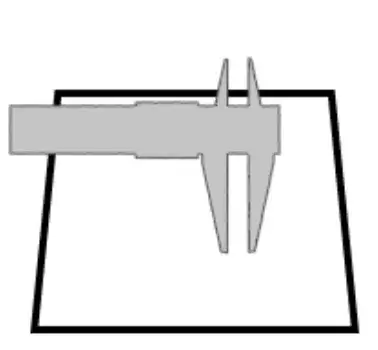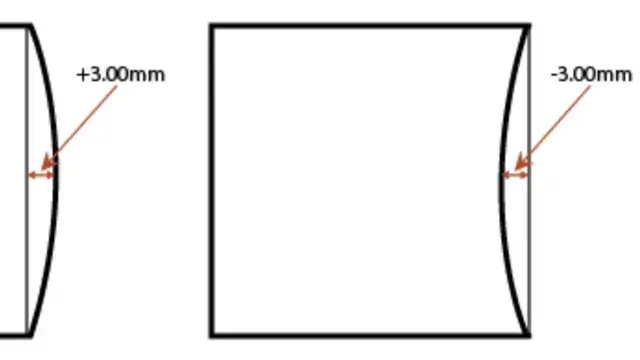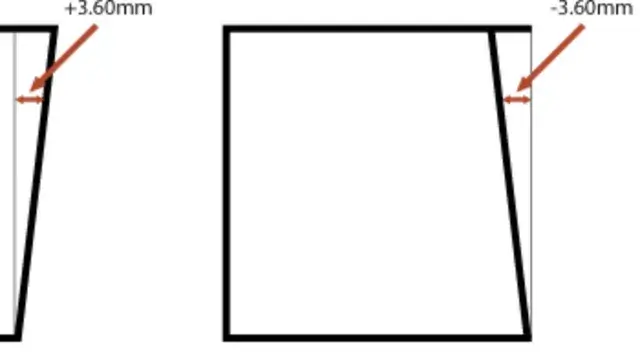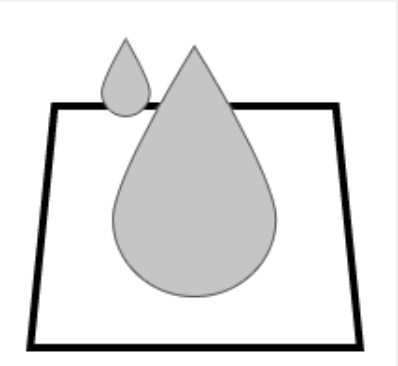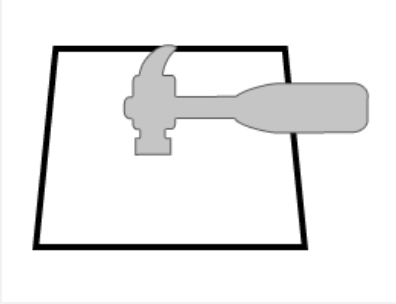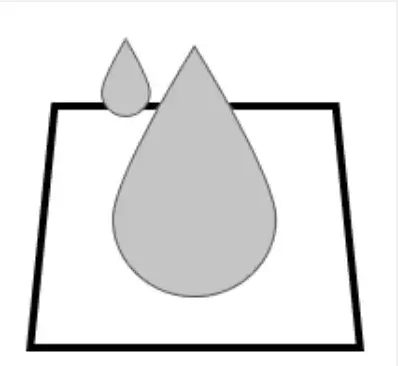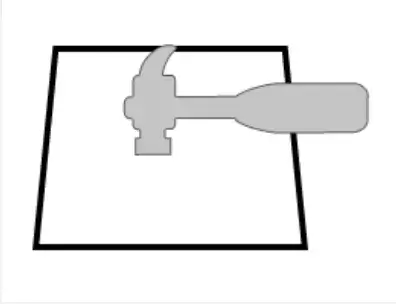THE TEST METHOD FOR GLAZED TILES UNDER ABRASION RESISTANCE IS THE PORCELAIN ENAMEL INSTITUTE (PEI) RATING.
The method consists of a visual assessment, according to specific conditions of observation, of the effect produced by abrasion of the tile surface with specified amounts of abrasive material using an apparatus designed for carrying out this test with increasing intensity. The resulting observations are assigned to a class of abrasion resistance, with increasing order of resistance, according to the following classifications:
Classes
CLASS I : Tile for areas that are walked on essentially with soft soled footwear or bare feet without scratching dirt (e.g. bathrooms and bedrooms in private homes without direct access to the outside).
CLASS II : Tile for areas that are walked on with soft soled or normal footwear with, at the most, occasional small amounts of abrasive dirt,(e.g. rooms in the living areas of homes, with the exception of kitchens, entrance ways and other rooms which may have considerable traffic).
CLASS III : Tile for areas that are walked on quite often with normal footwear and amounts of abrasive dirt,(e.g. halls, kitchens, corridors, balconies and terraces).
CLASS IV : Tile for areas that are subjected to considerable traffic with some abrasive dirt so that the conditions are the most severe for which glazed floor tiles are suitable,(e.g. entrance, work rooms, restaurants and exhibition and sales rooms as well as other rooms in public and private buildings not mentioned in Classes I,II and III).
CLASS V : Tile ideally suitable for heavy traffic areas under normal foot traffic conditions such as in all residential and heavy commercial areas.
In many cases, even though glazed tiles are being classified as above, the specific requisite will depend on what has been agreed, case by case, between producer-seller-buyer-consumer. For this reason, the resistance to abrasion, with such classifications, produces convenience, precise and fundamental criterion for choice of the tile as a function of its intended working environment.
Note that the PEI V class of resistance is assigned to tiles that not only show no visual evidence of abrasion, but also continue to manifest adequate stain resistance and clean ability.
THE TEST METHOD FOR ABRASION RESISTANCE OF UNGLAZED TILE IS THE DEEP ABRASION TEST.
The method entails measuring the volume of material removed from the surface of the tile by means of rotating disc under specified conditions and the use of abrasive material. The results from this test are more related to the technical performance of the tile surface rather than to the aesthetic effects.
Moreover, for unglazed tile, the damage caused by abrasion is lesser because any removal of the tile surface caused by abrasive action only reveals an underlying layer of the same composition and therefore with the same appearance as the original surface without altering its functionality.
THERMAL SHOCK refers to sudden and unexpected variations of temperature of floor or wall tiles due to accidental or intentional contact with hot or cold substances (such as from the fall of a boiling liquid, hot vapors used for cleaning, or, in the case of exterior floors or walls, from sudden temperature shifts). Thermal shock resistance is the characteristic which indicates whether or not the tile is capable of withstanding such rapid changes in temperature without being damaged.
THE MOISTURE EXPANSION corresponds to the expansion, expressed in mm/m, which a tile may undergo as a result of the adsorption of moisture. The tendency for this behavior is more or less exclusively for porous tile. Thus testing for this characteristics is required only for unglazed tile with values of water absorption greater than 6% (specifically, tile falling into Groups Allb, Alll, and Bllb).
FROST RESISTANCE
Is the characteristic which some types of ceramic tile have to resist the action of frost in humid environments and at temperatures below 0°C which commonly occurs in temperate countries.
The mechanism of frost action involves two distinct steps. The first step is the penetration of water into the pores of the tile, and the second is the solidification (freezing) of the water inside the pores.
As is well known, the transformation of water from the liquid to the solid state is accompanied by an increase in volume due to the fact that density of ice is less than that of water. For this reason, when the water inside a pore freezes, it subjects the material to considerable mechanical stress which can lead to cracking of the tile and possibly breaking-off of a portion of the material. The action of freezing, therefore, can give rise to the appearance of fractures and chipping.
Based on the mechanism described, the frost resistance of a material is determined by two parameters:
- the presence and quantity of pores, thus the possibility that water will penetrate into the interior of the material, and
- the shape size of the pores present, thus, depending on the more or less complete filing of the space available, the amount of space the water has in which to expand during freezing which, in turn, determines the degree of stress induced.
Consequently, there exists a certain correlation between frost resistance and water absorption: the lower the water absorption, the greater the probability that the material will be frost resistant. However, the choice of frost resistant tile is certainly indispensable for tiled surfaces exposed to high humidity and low temperatures, but that alone may not be sufficient to avoid the appearance of frost damage, because not only the tiles, but rather the whole floor or wall system must be frost resistant.
THE SLIPPERINESS OF A SURFACE
Is the characteristic which describes the kinetic and dynamic conditions of the movement of a body in contact with it. Floors, in this case here, is immediately evident how the slipperiness is closely related to the safety of walking across it. Today this characteristic is increasingly gaining attention, partly because of laws and regulations which establish the strict responsibility of the owner of the floor with respect to accidents and damages to third parties caused by falls.
One of the many reliable parameters used to characterize the slipperiness of a surface is the COEFFICIENT OF FRICTION. The higher the coefficient of friction, the less slippery is its surface. The coefficient of friction depends on the nature of the two bodies in contact as well as on the conditions of contact itself whether with or without the presence or absence of material interposed between the surfaces, the humidity and temperature conditions.
The coefficient of friction, in comparison with that for a dry, clean surface, decreases in the presence of oil, grease, dirt, water, and other materials which serve as lubricants between the sole of a shoe and the floor. When such materials are present, therefore, the slipperiness of the floor increases as does the risk of falls and accidents.
Rough surfaces tend to have higher coefficient of friction. Any uneven roughness can be naturally or expressly obtained by creating various types of relieves of shapes and sizes. This is because uneven surfaces inhibits the formation of an incessant film of liquid, responsible for the decrease in friction, even with the presence of water or other form of liquid.
Nevertheless, such surface profiles that provide ideal condition of safety with regards to prevent slipping and falling also cause the surfaces to be more difficult to clean. This is an important factor which must be kept in mind when choosing a floor covering, like if we in dire need to choose safety over cleanliness opt for darker tone of colors to offset its “shortcoming”. Ceramic tile, especially unglazed tile, in general is one of the least slippery materials among those most commonly used for floor coverings.
CHEMICAL PROPERTIES
CHEMICAL RESISTANCE refers to the behavior of the ceramic surface when exposed to aggressive chemicals which, due to their composition and properties, corrode the ceramic surface and penetrate it permanently or even alter its aesthetic appearance.
Highly acidic or alkaline base chemicals may be found in various processed liquids (like milk in a cheese factory, lubricating grease and oils in an automotive repair shop, blood in a slaughterhouse, and laboratory chemicals), and other materials that may come accidentally into contact with floor or wall tiles (like foods, ink, rust, oil and so forth in a private residence), as well as detergents for ordinary and extra-ordinary cleaning and maintenance.
Deterioration of a ceramic tile surface caused by the various chemicals cited above is generally compounded to two distinct mechanisms effects:
- an actual chemical reaction between the substance and tile resulting in alteration of the ceramic surface (ceramic surfaces, in general, are inert to any reaction of chemicals, with the sole exception of any fluoride compound and its derivatives); and
- the chemicals penetrate below the tile surface permanently and become extremely difficult to remove in some way or another. This is partly attributed to the fact that any form of severe abrasive nature or condition can cause the chemical resistance of a ceramic surface to deteriorate when certain level of micro-porosity starts developing.
The results of these test allows tiles to be classified to a particular class of resistance, for each staining agent or for each chemical specified in the standard. The classes, in decreasing order of resistance are as follow:
- STAIN: Class 1, Class 2 and Class 3; (Class 1: good resistance to staining; Class 3: persistence to stains, and thus poor resistance.)
- CHEMICALS: Class AA, Class A, Class B, Class C and Class D. (Class AA: optimum resistance to chemicals; Class D: poor resistance to chemicals.)


